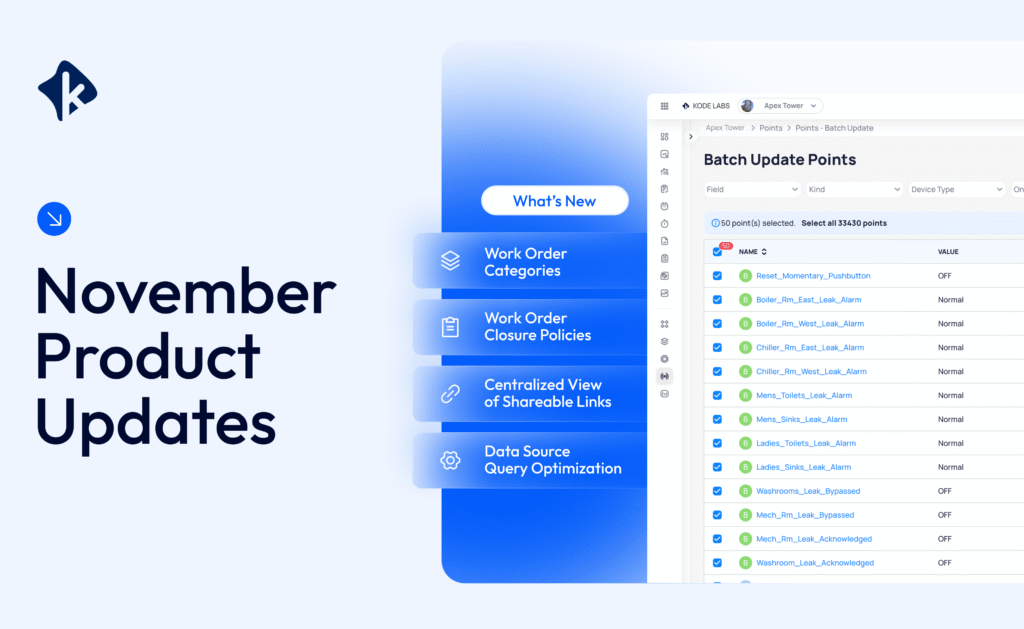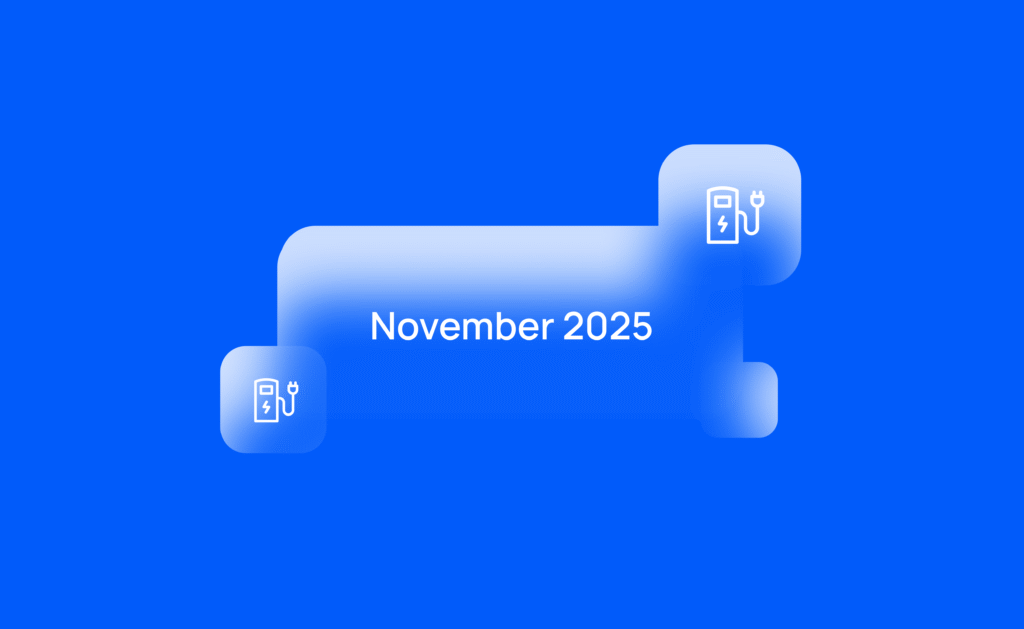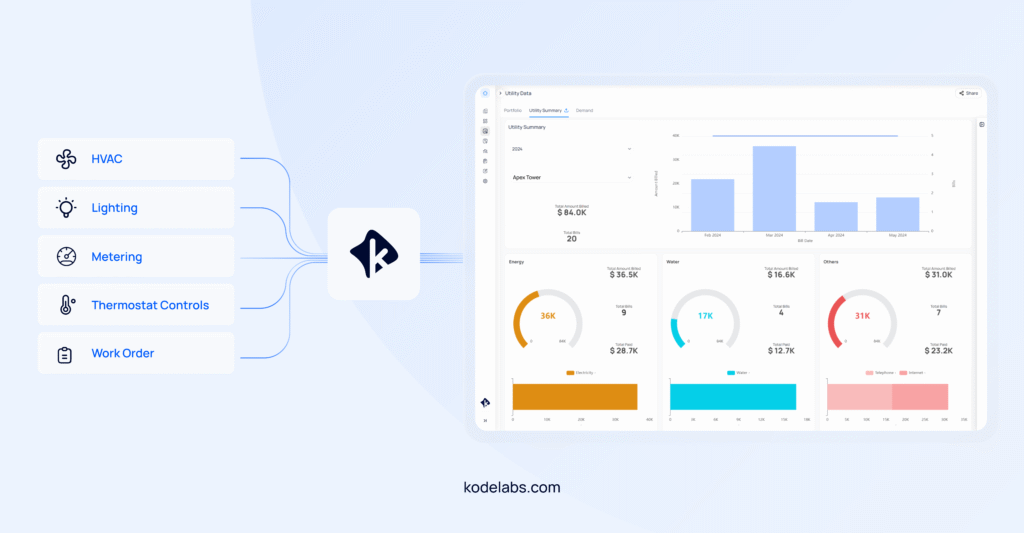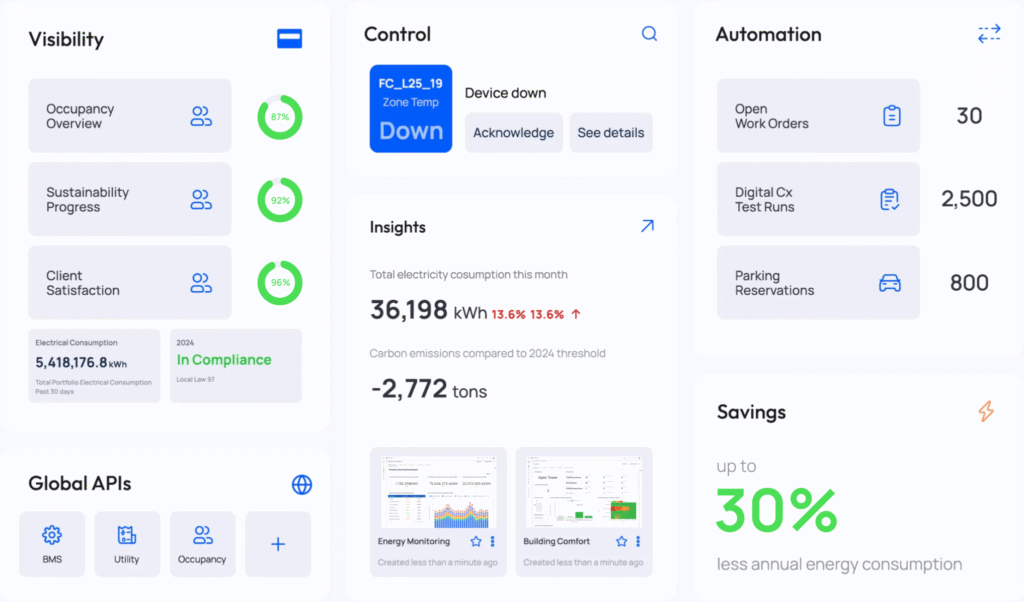On this page
Sign up to our newsletter
Subscribe to receive the latest blog posts to your inbox every week.
By subscribing you agree to with our Privacy Policy.
We shipped upgrades across Cloud BMS, Digital Maintenance, Building BI, and the IoT Platform—so your teams get to the root cause faster, keep data clean, and keep dashboards consistent.
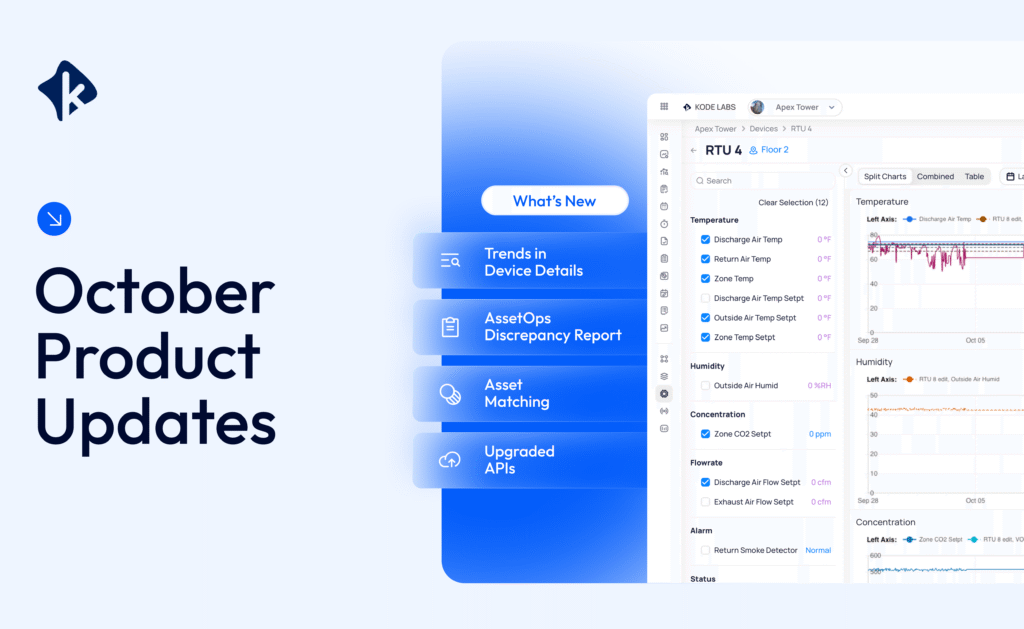
Cloud BMS
Trends in Device Details
What’s new: A redesigned Device Details page centered on a new Trends module. Trend points from the device and its referenced devices, group points, set default groups right from the view you already use.
Why it matters: Faster, more intuitive access to the data that explains behavior—without hopping tabs. Grouping and defaults cut clicks; cross-device trending adds the context you need to diagnose quickly.
Access Products on Landing Page (Launchpad)
What’s new: The landing screen now shows AssetOps alongside KODE OS, so users can jump straight to the right app.
Why it matters: Fewer steps for new and existing users—especially teams with AssetOps-only permissions—and a more consistent suite experience.
Digital Maintenance
Discrepancy Report on AssetOps
What’s new: Compare a main vs. secondary data source at the site level to find missing assets and field-level mismatches (Serial, MAC, IP, Manufacturer, Model, Firmware, OS). Review, then Add Asset or Update Asset—with API pushes where supported. Includes provenance tracking, matching rules/field mapping, validation checks, and Excel export. (v1: manual runs, no bulk remediation, predefined fields.)
Why it matters: Turns AssetOps into a reconciliation engine—less time in spreadsheets, cleaner inventories, fewer integration errors, and clearer accountability.
Asset Matching on AssetOps
What’s new: We’ve introduced a post-discovery asset matching feature that enables users to review, suggest, and merge duplicate or related assets at any time. Review, suggest, and merge duplicate/related assets any time with configurable rules (exact MAC/IP, fuzzy names), auto-suggested candidates, priority field mapping, and full provenance. Merge or create new, your call.Why it matters: Consolidates records into a single source of truth across schedules, graphics, and tasks—reducing noise and admin time.What’s new: We’ve introduced a post-discovery asset matching feature that enables users to review, suggest, and merge duplicate or related assets at any time. Review, suggest, and merge duplicate/related assets any time with configurable rules (exact MAC/IP, fuzzy names), auto-suggested candidates, priority field mapping, and full provenance. Merge or create new, your call.
Why it matters: Consolidates records into a single source of truth across schedules, graphics, and tasks—reducing noise and admin time.
Building BI
Widget Bulk Styling
What’s new: Widget Bulk Styling lets you apply a style to all charts of the same type on a page. Use a Default Style Panel as your baseline, select multiple widgets to edit at once, and copy/paste complete style configs between charts.
Why it matters: Achieve portfolio-grade consistency in seconds and skip repetitive restyling. It also sets the stage for future multi-widget actions.
Integrations Library
Our integrations library has updates to 8 existing APIs. Read about them here.
KODE OS brings building systems, data, and workflows into one place so your teams (and AI) always operate with context—spanning Cloud BMS, Building BI, Digital Maintenance, and more. If you’re new here, explore how these modules work together to deliver measurable outcomes.
